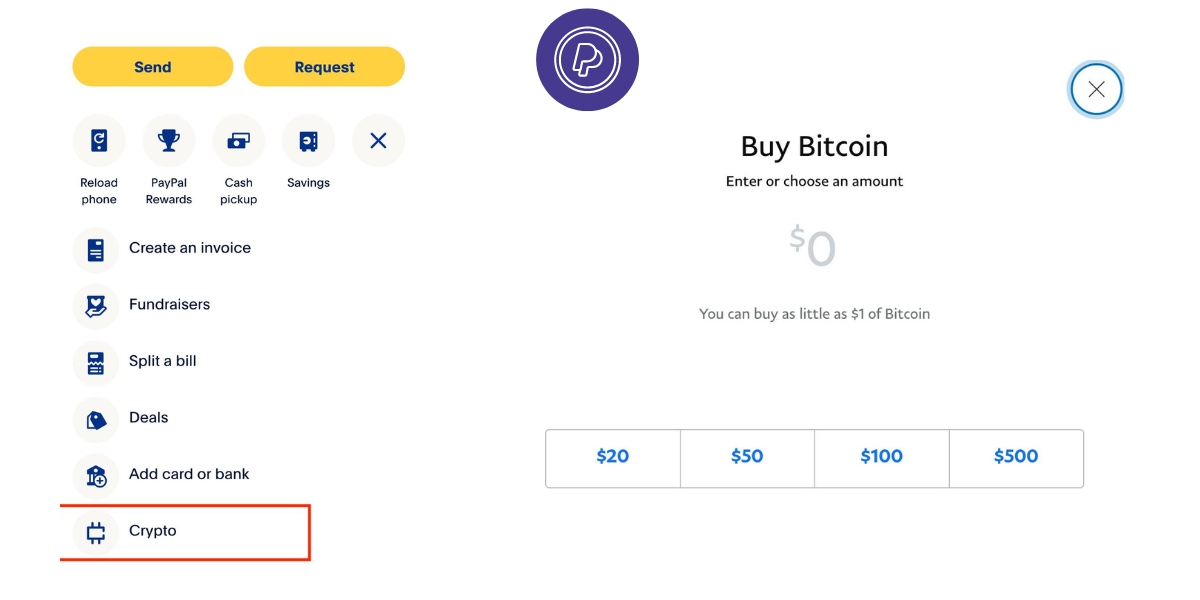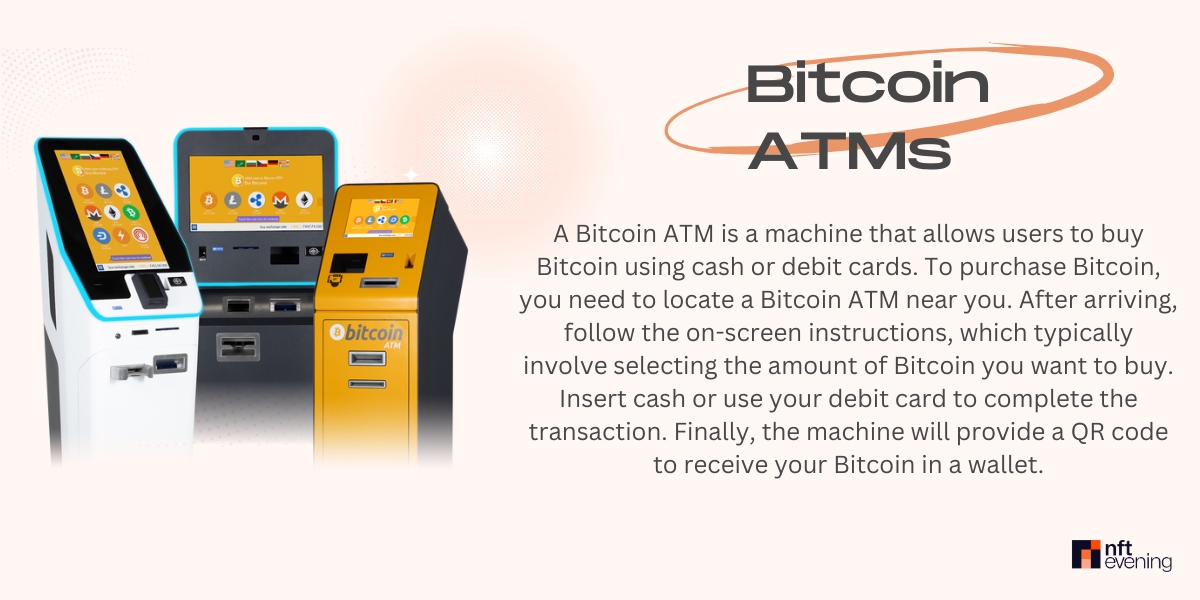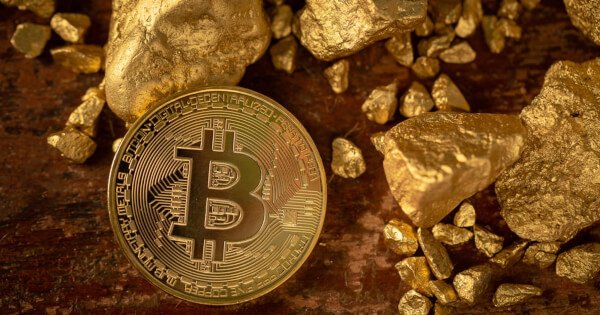WEEX Review 2025: Is This Crypto Exchange Worth It?
Fungible vs Non-Fungible Tokens: Key Differences Explained
3Commas Review 2025: Pros & Cons, Features, Pricing, and More
How to participate IDO on Binance Wallet
Day Trading Crypto: A Beginner’s Guide
How to Buy Altcoins: A Complete Guide for Beginners
Top 5 Airdrop Farming Projects on Solana (Part 2)
Farming Airdrops on Binance Alpha: Low Risk, High Reward
How to participate in Hyperlane presale on Binance Wallet
What is Hyperlane: The Best Guide to Cross-Chain Connectivity
Is Binance Safe? Binance Exchange Security Measures Tested
Is MetaMask Safe and Legit? Security Measures Analysis
6 Best Crypto Exchanges in Singapore For 2025
Phemex Review 2025: Is it a Safe & Legit Crypto Exchange?
What Is GameFi and How Does It Work?
What is Ondo Finance? Future of RWAs and DeFi
What is Gem Wallet: Best Multi-Chain Solution for DeFi Users
What are Utility NFTs? Best NFT Utility Examples
Rabby vs MetaMask: Which is a Better Crypto Wallet?
What Is DeSci? The Ultimate Guide to Decentralized Science
What Are Pudgy Penguins (PENGU)? The Ultimate Collector’s Guide
What Is Trust Wallet? A 2025 Comprehensive Guide
What is DeFi (Decentralized finance) and How Does it Work?
What is DeFi NFT? The Ultimate Guide
Zora Airdrop Scandal: From “For Fun” to Loss of Trust
Gold vs. Bitcoin: Two Pillars of Value Preservation, But Which Is Better?
TRUMP Memecoin Price Prediction from April to May, 2025
Is May the beginning of a new growth cycle for Bitcoin?
Hyperliquid Deep Dive: Understand HYPE and HLP Model
XRP Deep Dive: A Masssive Player in Today’s Crypto Market
Study: 88% of Businesses Reported Higher Revenue after Accepting Crypto Payment
Survey: Nearly 80% of FTX Creditors Will Reinvest in Crypto with Their Repayment
XDC Deep Dive
Survey: 1 in 7 Americans Has Bought TRUMP Memecoin
Robonomics (XRT) Deep Dive
2025 Crypto Ownership Report: 70% of American Adults Own Cryptocurrency
By Amit Chahar
Key Takeaways
You can buy Bitcoin using popular crypto exchanges like Binance, Coinbase, and OKX, as well as payment methods such as credit cards, PayPal, and Bitcoin ATMs for easy transactions.
Buying Bitcoin involves selecting a crypto platform, creating an account, depositing funds, placing an order, and finally purchasing BTC using market or limit orders.
You can store Bitcoin safely using hardware wallets for offline security, software wallets for ease of access, and paper wallets for long-term storage.
Buying Bitcoin can seem overwhelming at first, but it is easier than you might think. With the rise of digital currencies, many people want to know how to buy Bitcoin and invest in this exciting market.
This guide will walk you through the steps you need to follow, from choosing the right platform to understanding how to store your Bitcoin safely.
Binance Referral Code
-10% Trading Fees
Get 10% Lifetime Cashback on Every Trade
Code Valid: April 2025
Buying Bitcoin may seem tricky at first, but it’s quite simple once you know the steps. Let’s walk through the process:
There are many crypto exchanges and apps out there, each with its own trading features. Some popular ones include Binance, Bybit, MEXC, OKX, and Coinbase.
When picking an exchange, consider factors like fees, security, supported cryptocurrencies, and whether it’s legal in your country. It’s like choosing a bank – you want one that’s trustworthy and meets your needs.
Also, ensure that the crypto trading platform accepts the payment methods that you want. Some allow you to use credit cards, while others may only support bank transfers. Also, search for an exchange with an easy-to-use interface and responsive customer service. If you still need more assistance, you can check our detailed guide on the best crypto exchanges in the world.
User Score
10
Promotion
-10% Trading Fees
Get 10% Lifetime Cashback on Every Trade
Once you’ve chosen an exchange, it’s time to set up your account. This process is similar to opening a new bank account. You’ll need to provide some personal information and verify your identity. This is called the KYC procedure. This step is important to follow anti-money laundering rules.
After your account is set up, you’ll need to add money to it. This is called making a deposit. You can usually do this with regular money (also called fiat currency) like USD, EUR, INR, or GBP. The crypto exchanges also let you deposit other cryptocurrencies if you already have them on another crypto wallet.
Usually, you’ll need to utilize a credit card or link a bank account to make a fiat deposit. You can also use third-party payment providers like MoonPay, Simplex, Banxa, Google Pay, Apple Pay, and more.
Remember, each exchange has its own rules about minimum deposit amounts and fees. Make sure you understand these before you start. It’s always wise to start with a small amount until you’re comfortable with how everything works.
Once your account has funds in it, you can place an order to buy Bitcoin (often abbreviated as BTC).
There are usually two main ways to buy:
When you’re ready to buy, you’ll need to figure out how much Bitcoin you want. You do not have to buy an entire Bitcoin; you can purchase parts of one. For example, you can choose to buy $100 worth of Bitcoin, regardless of how many Bitcoins you receive.
Once you’ve made these options, double-check everything and finalize your purchase. The exchange will process your order, and you will shortly become a Bitcoin owner.
After buying Bitcoin, it is highly suggested that you transfer it to an external Bitcoin wallet. Keeping your Bitcoin on an exchange exposes it to possible threats like hacking or platform failure. An external wallet provides increased protection for your Bitcoin and gives you complete control over your assets.
There are several sorts of wallets accessible, including hardware wallets, software wallets, and paper wallets. To send Bitcoin, you’ll only need the Bitcoin deposit address from your external wallet.
Binance Referral Code
-10% Trading Fees
Get 10% Lifetime Cashback on Every Trade
Code Valid: April 2025
Currently, PayPal allows certain users, specifically those with PayPal Balance accounts and eligible business account holders, to buy cryptocurrency, including Bitcoin.
To purchase Bitcoin through PayPal, you will need to follow these simple steps on the PayPal mobile app.
Step 1: First, open the app and go to the “Accounts” section. From there, select “Crypto”. This will take you to the cryptocurrency section, where you can start your Bitcoin purchase.
Step 2: Next, tap on “Buy” to initiate the transaction. You’ll then be prompted to choose the amount of Bitcoin you wish to purchase. PayPal gives you several options regarding the frequency of your purchase. You can decide if you want it to be a one-time transaction or if you’d prefer recurring purchases.
The frequency options include daily, weekly, biweekly, or monthly purchases. If you’re not looking for a recurring purchase, it will default to a one-time buy.
Step 3: Once you’ve selected the amount and frequency, you’ll be asked to choose a starting date for your transaction. After doing that, tap “Confirm” to proceed to the next step. At this point, you’ll be shown a summary of your order, where you can review all the details. If everything looks correct, tap “Next” to move forward.
Step 4: After confirming your order, you’ll need to select your payment method. PayPal allows you to use the payment options linked to your account, such as your bank account or credit card. Once you’ve chosen the preferred method of payment, tap “Next” to authorize the transaction.
Step 5: Finally, you’ll be asked to confirm and schedule the purchase. Tap “Authorize and Schedule”, and the transaction will be finalized. If you opt for a one-time purchase, your Bitcoin will be purchased immediately. If you selected a recurring option, the app will schedule future purchases according to the frequency you chose.
Note: Many cryptocurrency exchanges like Binance, OKX, and Bybit also allow you to buy Bitcoin using PayPal through their P2P marketplace.
Many cryptocurrency exchanges allow users to purchase Bitcoin using credit cards. This option provides ease of use, as most people are familiar with credit card payments.
The process is straightforward. First, make sure the exchange accepts credit card payments. Binance and KuCoin are the two most popular platforms. Then, enter your credit card details and link them to the exchange, deposit funds into your exchange account, and place a buy order for Bitcoin.
Be aware that using a credit card to buy Bitcoin often incurs higher fees compared to bank transfers or other forms of payment. Some platforms might charge a percentage of the transaction amount as a fee.
Bitcoin ATMs offer a straightforward method to purchase Bitcoin using cash or, in some cases, a debit card. While these machines function similarly to traditional ATMs, the process is somewhat different. 
Here’s a detailed guide on how to navigate a crypto ATM effectively.
Step 1: Found a Bitcoin ATM in a Nearby Area
Your first task is to find a Bitcoin ATM. Websites like CoinATMRadar can be helpful. Ensure that you check the transaction fees and limits beforehand, as these can vary by machine.
Step 2: Set Up Your Wallet
Before making a purchase, you need a crypto wallet capable of receiving Bitcoin. This could be a software or hardware wallet, depending on your preference for security. Have your wallet’s QR code or public key accessible, as the machine will need this information to transfer your Bitcoin.
If you don’t have a wallet yet, check out our detailed review of best crypto wallets to choose the right one.
Step 3: Input Your Purchase Amount
Select the “Buy Bitcoin” option and specify the cash amount you wish to convert into Bitcoin. The ATM will display the current exchange rate and applicable transaction fees, allowing you to review the total cost before proceeding.
Step 4: Scan Your Wallet Address
The next step involves scanning your wallet’s QR code using the ATM’s scanner. This step ensures the Bitcoin is sent directly to your wallet. Double-check the wallet address for accuracy, as Bitcoin transactions are irreversible.
Step 5: Insert Cash
With your wallet address confirmed, proceed to insert cash into the machine. It automatically converts the cash into Bitcoin based on the prevailing exchange rate. Be aware that transaction fees for Bitcoin ATMs can be significant, often ranging from 5% to 10%, which is much higher than online exchanges.
Step 6: Confirm Your Transaction
After cash insertion, finalize your purchase by pressing the “Buy” or “Confirm” button. The machine will process the transaction, which may take several minutes to complete due to the Bitcoin network’s congestion.
Step 7: Verify Receipt in Your Wallet
Once the transaction is processed, the purchased Bitcoin will be sent to your wallet. Depending on network activity, it might take some time for the coins to appear. After confirming that the transaction is complete, store your Bitcoin securely in your wallet.
Cryptocurrency exchanges are the most common platforms used to buy Bitcoin. However, not all exchanges function the same way. You can purchase Bitcoin on centralized exchanges, peer-to-peer (P2P) platforms, decentralized exchanges (DEXes), and even through mainstream brokerages.
Centralized exchanges (CEXs) like Binance, Coinbase, OKX, KuCoin, Bybit, and Kraken are popular choices for purchasing Bitcoin.
These platforms act as intermediaries, providing you with a user-friendly interface and advanced security features. Although convenient, they require you to trust the platform with your funds and personal data. This means they are the custodial crypto platforms.
User Score
9.8
Coinbase Promotion
Get Bonus Up to $600
P2P platforms, such as Paxful, mean buying Bitcoin person-to-person without any middleman. These platforms act as facilitators but don’t control the transaction.
You and the seller agree on terms, and the transaction is processed without intermediaries. P2P platforms offer greater privacy but may require more caution due to the direct interaction with other individuals. This entire P2P process is based on the “Escrow” system.
On decentralized exchanges like Uniswap or PancakeSwap, you can buy Bitcoin without a centralized authority. DEXes operate on smart contracts and allow for direct trading between you and another party.
These exchanges provide higher privacy and reduce the risk of hacking, but they can be more complex to navigate, especially if you are a beginner.
Mainstream brokerages, like Robinhood or eToro, have also integrated Bitcoin trading into their platforms. While they don’t offer the same range of cryptocurrency features as specialized exchanges, they provide an easy way for those familiar with traditional investing to enter the Bitcoin market. However, many of these platforms limit your ability to withdraw Bitcoin to external wallets.
User Score
10
Join For Welcome Rewards
$10 Welcome Bonus
After buying Bitcoin, ensuring its safe storage is essential. Various storage methods are available, each providing different levels of security and ease of access.
Selling Bitcoin is similar to the process of buying it. To sell, you’ll need to transfer your Bitcoin to an exchange that allows selling. Most of the major exchanges support both buying and selling functions.
Once your Bitcoin is on the exchange, you can place a sell order. You have two options: a market order or a limit order, just like when buying Bitcoin. A market order allows you to sell Bitcoin instantly at the current price, while a limit order allows you to set the price at which you want to sell.
After the sale is complete, you can withdraw the funds in your local currency. This can be done through bank transfers or other supported withdrawal methods.
To sum up, knowing how to buy Bitcoin is important for anyone wanting to invest in cryptocurrency. You can easily purchase Bitcoin by following the steps in this guide and choosing the right platform.
There are many ways to buy Bitcoin, like using credit cards, bank transfers, or PayPal, so you can find what works best for you. It’s also essential to know how to keep your Bitcoin safe after buying. Hardware wallets offer the best protection, while software wallets are easier for quick access.
Bitcoin (BTC) is a decentralized digital currency that allows peer-to-peer transactions without the need for intermediaries, such as banks. It operates on a public ledger called the blockchain.
Bitcoin was created in 2008 by an anonymous person or group using the pseudonym Satoshi Nakamoto.
Bitcoin is a digital currency that functions through a technology called blockchain. This is a public record that keeps track of every transaction made with Bitcoin, ensuring everyone can see it while keeping users anonymous. When you send Bitcoin, your transaction is shared with the entire network of users.
To confirm the transaction, special users called miners use powerful computers to solve complex problems. Once they solve these problems, the transaction is approved and added to a block of other transactions. This block then connects to previous blocks, forming a chain—hence the term “blockchain”.
Bitcoins are created through mining, where miners are rewarded with new coins for their efforts. This process also helps protect the Bitcoin blockchain or network from fraud. By combining blockchain technology and mining, Bitcoin operates without needing a central authority, making it a decentralized currency.
When considering how much Bitcoin to invest in, it is wise to begin with a modest amount. Many financial experts recommend that investors allocate 5% to 30% of their total investment funds to cryptocurrencies like Bitcoin. For instance, if you have $1,000 set aside for investment, starting with $50 to $300 can be a sensible approach, depending on your comfort with risk.
At the time of writing, Bitcoin is valued at around $86,030.39 but this figure can change rapidly. To obtain the most accurate and current price, it’s advisable to check CoinMarketCap.
Investing in Bitcoin can offer high returns, but it also involves significant risks due to its price volatility. Historically, Bitcoin has demonstrated strong long-term growth potential; however, its short-term price can vary dramatically.
The total supply of Bitcoin is capped at 21 million coins. Currently, most of these (over 19.76 million) have been mined, and the rest will be gradually released through mining rewards.
Yes, Bitcoin is legal in most countries. In the United States, it is treated as a form of property rather than currency. This means that transactions involving Bitcoin are subject to capital gains tax, similar to other assets.
Amit Chahar
With a background in Computer Science, Amit Chahar is a passionate crypto writer, specializing in Crypto and Blockchain Technology. With over 5 years of experience in the crypto and Web3 space, Amit has authored more than 1,000 articles, making him a prolific and knowledgeable writer in the field. His dedication extends beyond writing, as he is also the founder of two crypto websites: walletreviewer.com and reviewexchanges.com. Beyond crypto trading and investing, he is also a stock investor and enjoy playing cricket in his free time.
Disclaimer
NFTevening is an award-nominated media outlet that covers NFTs and the cryptocurrency industry. Opinions expressed on NFTevening are not investment advice. Before making any high-risk investments in cryptocurrency or digital assets, investors should conduct thorough research. Please be aware that any transfers and transactions are done at your own risk, and any losses incurred are entirely your responsibility. NFTevening does not endorse the purchase or sale of any cryptocurrencies or digital assets and is not an investment advisor. Additionally, please note that NFTevening participates in affiliate marketing.
Cryptocurrency
Analysis
Crypto Basics
Cryptocurrency
Learn
Exchanges
Guides
News
Exchanges
Data
Guides
Analysis
Please be aware that our Privacy Policy, Terms of Use, and Disclaimers & Ethics notice have been updated.
NFTevening is a renowned and award-nominated media platform dedicated to reporting on the cryptocurrency industry. Its journalists adhere to a rigorous set of editorial standards, guided by principles designed to uphold integrity, ensure editorial independence, and maintain unbiased reporting across all its publications.
The latest news, articles, and resources, sent to your inbox weekly.
How to Buy Bitcoin (BTC): The Beginner’s Guide 2025 – NFT Evening





